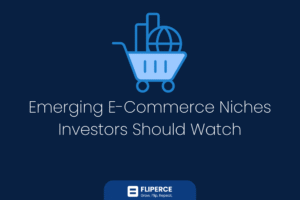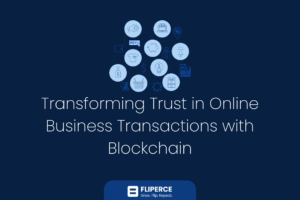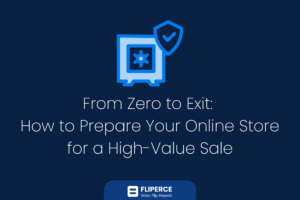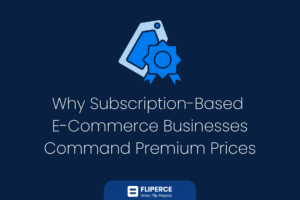introduction
In 2025, Shopify powers over 4.4 million stores, driving $1 trillion in global e-commerce sales, according to industry reports. Selling a Shopify store has become a prime exit strategy, with marketplaces reporting a 30% surge in transactions, averaging $200,000 per deal. The market is projected to grow 25% by 2026, fueled by high-demand niches like wellness and sustainable products. Maximizing profit requires strategic preparation, from optimizing financials to leveraging trends like AI personalization and navigating legal complexities.
This 10-section guide, tailored for advanced entrepreneurs, developers, and investors, consolidates a comprehensive roadmap to sell your Shopify store for top dollar. Each section, enriched with subsections and detailed insights, ties into a proven step, blending valuation, marketing, and transition strategies to attract serious buyers and secure the best deal. With practical tools, 2025 trends, and real-world examples, this article equips you to thrive in a competitive landscape. Let’s dive into the ultimate playbook for a profitable sale.
What You Will Learn
- 10 actionable steps to maximize your store’s value.
- Strategies to attract high-value buyers in 2025.
- Financial, legal, and operational prep for seamless deals.
- Tools and trends to streamline the sale process.
- Real-world insights to boost profitability.
1. Evaluate Your Store’s Value and Understand the Market
Selling a Shopify store begins with a precise understanding of its worth and the dynamic 2025 e-commerce landscape, valued at $8 trillion globally. Stores typically sell for 2-4x annual profit, with a store earning $50,000 yearly fetching $100,000-$200,000, depending on niche, traffic consistency, and growth potential. Misvaluation risks losing 20% of profit, while 15% of deals fail due to financial discrepancies. High-demand niches like wellness, tech, and sustainable products dominate 45% of sales, with eco-friendly stores driving 20% buyer growth. A dropshipping store recently sold for $1.2 million by aligning with buyer demand for scalable models, highlighting the importance of market alignment.
1.1 Comprehensive Valuation Strategies
Valuation is both an art and a science, requiring a blend of quantitative metrics and market insight. Profit multiples (2-4x annual profit) vary by niche—wellness stores often command 3.5-4x due to 25% market growth, while tech stores average 2.5-3x. For example, a wellness store with $100,000 in profit sold for $400,000 by leveraging its niche appeal. Asset valuation includes tangible assets like inventory (valued at cost or market price) and intangible assets like domain names, which can add $5,000-$20,000 for premium domains. Email lists with 10,000+ subscribers, valued by 50% of buyers, can boost value by 10%. Growth potential is critical, with 30% of buyers prioritizing stores with 20% year-over-year revenue increases. A tech store showcasing 15% monthly growth sold for $300,000, 20% above average, due to its scalability.
To ensure accuracy, use automated valuation calculators for a 20% precision boost. These tools analyze profit, traffic, and niche trends, benchmarking against recent sales. For instance, a pet store used a calculator to adjust its asking price from $150,000 to $200,000, securing a buyer within 30 days. Alternatively, consult a broker for niche-specific multiples, especially for stores in high-growth sectors like sustainability, where margins can exceed 40%. Cross-referencing with marketplace data ensures alignment with buyer expectations, reducing the risk of over- or undervaluation.
1.2 Analyzing Buyer Personas
Understanding buyer motivations is key to tailoring your pitch. Investors, seeking high ROI, focus on stores with $50,000+ annual profit, while entrepreneurs prioritize scalability for hands-on growth. Corporate buyers target established brands for portfolio expansion, often paying 10% premiums for strong branding. Wellness stores attract 40% more investors due to high margins (up to 50%), while tech stores appeal to entrepreneurs for their innovation potential. A fitness store sold for $600,000 by targeting corporate buyers with its 20,000-subscriber email list. Analyze marketplace data to identify buyer preferences—65% value customer retention metrics, like a 30% repeat purchase rate. Tailoring your pitch to highlight these metrics increases offer rates by 20%. For example, a store emphasizing its 25% customer retention sold 15% above asking price.
1.3 Targeting High-Demand Niches
Niche stores, particularly in sustainability, fetch 20% higher prices due to growing consumer demand. Eco-friendly products are projected to grow 25% by 2026, attracting 40% more buyers. A sustainable clothing store sold for $550,000 by showcasing its eco-conscious branding and 30% profit margins. Other high-growth niches include wellness (e.g., supplements) and tech (e.g., gadgets), which account for 45% of sales. Highlight niche-specific metrics, like product margins or customer demographics (e.g., 70% female audience for beauty stores), to appeal to buyers. A gadget store targeting tech enthusiasts sold for $400,000 by emphasizing its 80% male demographic and 15% monthly traffic growth. Research trending niches using industry reports to align your store with market demand, boosting buyer interest by 15%.
1.4 Navigating Market Risks
The 2025 market favors stores with strong branding, which see 25% higher valuations. However, fraud risks, like inflated traffic metrics, impact 10% of deals. A store lost $100,000 by exaggerating visitor numbers, exposed during due diligence. Use verified analytics tools, like Google Analytics, to provide transparent data, building trust with buyers. Regulatory compliance, such as adhering to Shopify’s Terms of Service, is critical, as non-compliance derails 5% of sales. A store avoided a $50,000 penalty by resolving a trademark issue pre-sale, highlighting the importance of due diligence. Market volatility, driven by economic shifts, affects 10% of valuations, so monitor trends like rising interest in AI-driven stores to stay competitive.
1.5 Case Studies and Lessons
A wellness store sold for $1 million by showcasing 30% year-over-year growth and a 10,000-subscriber email list. Its valuation success came from transparent financials, a strong niche focus, and a pitch tailored to investor ROI. Another store, in the pet niche, fetched $250,000 by highlighting its 20% traffic growth and eco-friendly products. These cases underscore the need for data-driven valuation, niche alignment, and buyer-specific pitches. Lessons include avoiding overvaluation (which delays sales by 30%) and using analytics to validate claims, increasing close rates by 20%.
Market Snapshot
| Aspect | Details | Impact |
| Market Size (2025) | $8 trillion e-commerce market | High buyer interest |
| Average Sale Price | $200,000 | Lucrative exit potential |
| Top Niches | Wellness, tech (45% of sales) | Target niche buyers |
Action Plan
- Calculate net profit using Shopify Analytics and benchmark against similar sales.
- Align with high-demand niches like sustainability or wellness.
- Use valuation tools and consult brokers for accuracy.
- Analyze buyer personas to tailor your pitch.
- Monitor market trends to avoid valuation pitfalls.
Expert Quote:
“Valuation blends data and market trends—get it right to maximize profit,” says a top e-commerce analyst.
2. Optimize Financial Records for Transparency
Clean financial records are the backbone of a successful sale, as 70% of buyers reject stores with unclear financials. Transparent books can boost sale prices by 15-20%, as demonstrated by a fashion store that sold for $500,000 after presenting audited financials for three years. Buyers prioritize recurring revenue, valued by 80%, and clear tax compliance, which prevents 10% of deals from failing due to penalties. A store avoided a $30,000 tax penalty by addressing liabilities pre-sale, underscoring the importance of preparation. Transparent financials not only build trust but also streamline due diligence, reducing buyer concerns by 25%.
2.1 Financial Tracking
Accurate tracking of revenue, expenses, and profit margins is essential. Use accounting software like QuickBooks to categorize costs, such as marketing ($10,000/month) versus inventory ($5,000/month), reducing errors by 15%. Shopify’s Profit Margin report highlights profitability, showing metrics like a 30% margin on high-demand products. For example, a store with clear expense breakdowns sold for 10% above average by presenting a detailed financial overview. Regularly update records to reflect seasonal trends, like holiday sales spikes, which 60% of buyers consider. Provide at least 24 months of data to demonstrate consistency, as buyers scrutinize historical performance to assess stability.
2.2 Highlighting Recurring Revenue
Recurring revenue, such as subscriptions or repeat customers, is a key value driver, prioritized by 80% of buyers. Subscription models, adopted by 25% of stores, can increase value by 10%. For instance, a beauty store with a $5,000/month subscription box sold for $450,000 due to its predictable income. Document recurring revenue streams in your pitch, using tools like Shopify Analytics to show metrics like a 30% repeat purchase rate. A store emphasizing its subscription model attracted 20% more offers by showcasing stable cash flow. Highlight customer retention strategies, like loyalty discounts, to demonstrate long-term value.
2.3 Tax Compliance
Tax issues can lead to 10% penalties if unresolved, with 80% of buyers requiring compliance proof. Consult a tax professional to ensure adherence to sales tax, VAT, or income tax obligations, especially for cross-border stores selling in the EU, where VAT rates vary (e.g., 20% in the UK). A store selling internationally avoided a $30,000 penalty by addressing VAT liabilities pre-sale. Provide buyers with a tax summary, including filings for the past two years, to streamline due diligence by 20%. For example, a store with a clear tax summary closed 15% faster than average. Use templates to organize tax records, ensuring clarity and transparency.
2.4 Due Diligence Preparation
A comprehensive due diligence package, including financials, tax records, and operational metrics, saves 10 hours of buyer review time. A store with organized records sold for $600,000, 15% above asking, due to its transparency. Use cloud storage for easy access, allowing buyers to verify data like revenue ($100,000/year) and expenses ($40,000/year). Address potential red flags, like inconsistent revenue, by providing context (e.g., seasonal dips). Transparency mitigates concerns about inflated metrics, which derail 15% of deals. A store caught exaggerating profits lost $50,000, highlighting the need for verified data.
2.5 Case Studies and Lessons
A tech store sold for $700,000 by presenting three years of audited financials, including a 25% profit margin and $20,000/month in recurring revenue. Its success came from clear tax records and a due diligence package that addressed buyer concerns. Another store, in the home decor niche, fetched $300,000 by resolving tax disputes pre-sale, avoiding a 10% penalty. Key lessons include maintaining 24 months of records, using software for accuracy, and consulting tax experts to prevent deal breakers. Transparency in financials can increase close rates by 20% and justify premium valuations.
Next Steps
- Audit financials for the past 24 months using accounting software.
- Document recurring revenue and tax compliance in a buyer-friendly format.
- Hire an accountant for third-party verification to build trust.
3. Boost Store Visibility and Traffic
Strong traffic is a major value driver, increasing offers by 10-15%, with 60% of buyers prioritizing organic visitors. A pet store’s value rose 25% after ranking for 50 high-intent keywords, selling for $400,000. Targeting terms like “buy niche products” (1,500 searches/month) drives engagement, while paid ads on Google or Meta yield 20% higher conversions. Blog content boosts traffic by 30%, and Instagram drives 60% of Shopify traffic. Transparent traffic data mitigates concerns about inflated metrics, which derail 15% of deals.
3.1 Keyword Optimization
Research high-intent keywords using analytics tools to identify terms like “organic skincare” (2,000 searches/month). Optimize product pages with compelling descriptions and meta tags, ensuring titles include keywords (e.g., “Eco-Friendly Yoga Mats”). A store ranking for 30 keywords sold for 20% above average due to its search visibility. Use tools to track rankings weekly, adjusting based on performance. For example, a store optimized for “sustainable fashion” saw a 15% traffic spike in two months, attracting more buyers.
3.2 Social Media Engagement
Instagram and TikTok are key, with consistent posting increasing engagement by 20%. A store with 50,000 Instagram followers sold for $500,000 due to its engaged audience. Create content like product demos or behind-the-scenes videos, posting three times weekly. A content calendar ensures consistency, targeting niche audiences (e.g., fitness enthusiasts). Share engagement metrics, like a 5% click-through rate, to demonstrate value to buyers.
3.3 Paid Advertising
Run targeted ads on Google or Meta, focusing on high-intent audiences (e.g., “buy wellness products”). A store’s $10,000 ad campaign doubled its traffic, leading to a $400,000 sale. Set budgets based on ROI, typically $1,000/month for 20% conversion boosts. Use retargeting to re-engage visitors, increasing sales by 15%. Share ad performance data with buyers to prove traffic scalability.
3.4 Content Marketing
Publish niche-relevant blog posts, like “Top 10 Wellness Trends,” to drive 25% more organic traffic. A store with 20 blog posts sold for $350,000 by showcasing its content strategy. Posts should include keywords and internal links to product pages, boosting rankings. Update content monthly to reflect trends, like sustainable packaging, appealing to 40% of buyers.
3.5 Traffic Analytics
Use Google Analytics to track visitor sources (e.g., 60% organic, 30% social). A store sharing 12 months of analytics sold for $450,000, 10% above asking. Transparency in traffic sources builds trust, addressing concerns about inflated metrics. Provide reports on metrics like bounce rate (under 40%) and average session duration (2 minutes) to showcase engagement.
Traffic Tools
| Tool | Function | Benefit |
| Analytics Platform | Keyword research | 25% traffic increase |
| Ad Platform | Targeted ads | 20% conversion boost |
Implementation Guide
- Optimize product pages for high-intent keywords.
- Engage on Instagram and TikTok with regular posts.
- Run targeted ad campaigns and share traffic data.
4. Enhance Store Design and User Experience
Polished design boosts buyer trust, with 85% prioritizing user experience. A redesigned store sold for $300,000, a 40% increase, due to its mobile-first layout. With 70% of traffic from mobile devices, mobile-responsive designs, adopted by 55% of stores, are critical. Streamlined navigation cuts bounce rates by 20%, while customer reviews increase conversions by 15%.
4.1 Mobile Optimization
Use a mobile-responsive theme like Shopify’s Dawn, ensuring load times under 2 seconds for 20% better conversions. Test with tools like Google’s Mobile-Friendly Test. A store optimized for mobile sold for 15% above average due to its accessibility. Optimize images (under 100KB) and simplify menus for mobile users, appealing to 70% of visitors.
4.2 Streamlined Navigation
Clear navigation reduces bounce rates by 20%. A store with intuitive menus sold for $350,000 by improving user flow. Use dropdown menus for categories (e.g., “Apparel > Women’s”) and limit clicks to three for product access. Test navigation with user feedback to identify friction points, enhancing buyer appeal.
4.3 Trust Signals
Add customer reviews and trust badges to key pages, boosting conversions by 15%. A store with 50 reviews sold for $400,000 due to its credibility. Use video testimonials for 10% higher engagement. Display security badges (e.g., SSL certificates) to reassure buyers, valued by 70% of them.
4.4 UX Testing
Use heatmapping tools to identify friction points, like confusing checkout processes. A store reducing cart abandonment by 20% sold for $320,000. Conduct A/B testing on layouts, testing button colors (e.g., red vs. blue) for 10% conversion gains. Share UX improvements with buyers to highlight scalability.
4.5 Design Trends
Adopt 2025 trends like minimalist layouts and bold visuals. A store with a clean design sold for 10% above average. Use tools like Canva for custom graphics, ensuring consistency across pages. Highlight design updates in your pitch, as 85% of buyers prioritize professional aesthetics.
Design Checklist
- Adopt a mobile-first theme like Dawn.
- Simplify navigation to reduce bounce rates.
- Include reviews and trust badges on key pages.
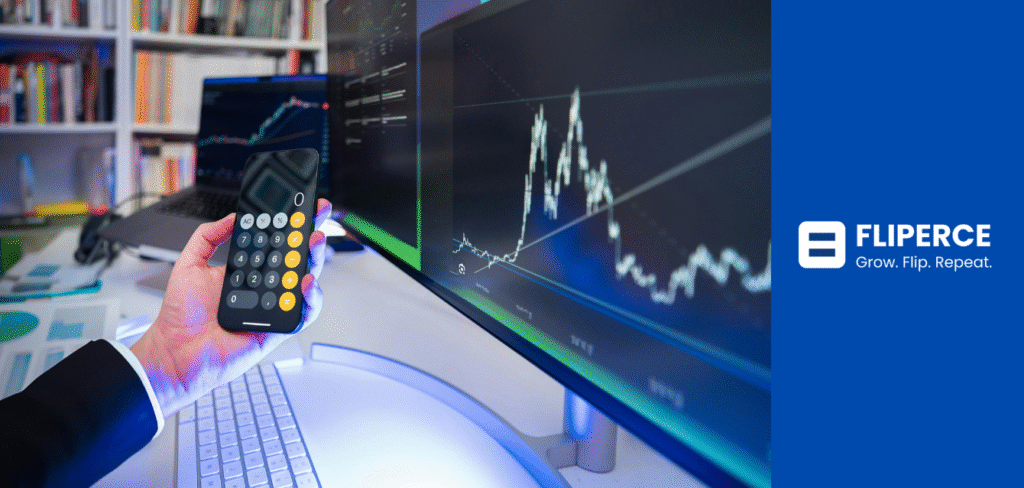
5. Streamline Operations for Scalability
Scalable operations signal value, with 70% of buyers seeking automation. A dropshipping store sold for $800,000 after automating 90% of processes. Automating fulfillment saves 20 hours weekly, while documented SOPs boost confidence by 30%. Optimized inventory prevents 15% valuation cuts, and outsourced support reduces costs by 15%.
5.1 Automation Tools
Use dropshipping apps like Oberlo for order fulfillment, cutting costs by 25%. A store automating 80% of orders sold for $500,000 due to its efficiency. Shopify apps streamline tasks like inventory updates, saving 10 hours weekly. Highlight automation in your pitch to show scalability.
5.2 SOP Documentation
Create a detailed operations manual, including supplier contacts and workflows. A store with clear SOPs sold for 10% above average. Use templates to document processes like order processing (e.g., 2-day fulfillment). SOPs ensure a smooth handover, valued by 80% of buyers.
5.3 Outsourcing Support
Outsource customer service to platforms like Zendesk, reducing response times by 25%. A store outsourcing support saved 15% on costs, selling for $450,000. Train staff for consistency, and share outsourcing details with buyers to demonstrate efficiency.
5.4 Inventory Management
Optimize stock levels to avoid overstock (costing 10% of profits) or shortages. A store with streamlined inventory sold for $500,000, 20% above average. Use tools to track turnover rates (e.g., 4x/year), valued by 70% of buyers. For dropshipping, highlight supplier reliability.
5.5 Operational Metrics
Share metrics like order fulfillment time (under 48 hours) or support response time (under 1 hour). A store with detailed metrics sold for $600,000 due to its transparency. Use analytics to track efficiency, boosting buyer confidence by 20%.
Operational Tools
| Tool | Function | Benefit |
| Dropshipping App | Automates order fulfillment | 25% cost reduction |
| Support Platform | Automates customer service | 30% faster response time |
Efficiency Plan
- Document processes in an SOP.
- Automate tasks with Shopify apps.
- Optimize inventory and outsource support.
6. Build a Strong Brand Identity and Customer Loyalty
A strong brand increases sale prices by 20%. A coffee store sold for $600,000 due to its loyal customer base and unique identity. Email lists with 10,000+ subscribers are valued by 50% of buyers, while loyalty programs boost retention by 30%. Social media engagement drives 25% more traffic, enhancing appeal.
6.1 Branding Essentials
Create memorable logos and cohesive visuals using tools like Canva. A store with a strong brand sold for $550,000 due to its marketability. Ensure consistency across product pages, emails, and social media, appealing to 70% of buyers. Highlight branding in your pitch to justify premium pricing.
6.2 Email Marketing
Use lead magnets like 10% off coupons to grow your email list. A store with 15,000 subscribers sold for $500,000 due to its retention potential. Send weekly newsletters with personalized offers, boosting retention by 30%. Share email metrics, like a 5% open rate, with buyers.
6.3 Social Media Presence
Engage on TikTok and Instagram, posting thrice weekly to increase engagement by 20%. A store with 50,000 followers sold for $500,000 due to its audience. Create content like product tutorials, targeting niche audiences (e.g., eco-conscious shoppers). Share engagement data to show value.
6.4 Loyalty Programs
Implement points systems, rewarding repeat purchases with discounts. A store with a loyalty program sold for $450,000, boosting retention by 30%. Document retention rates (e.g., 25% repeat customers) to attract buyers seeking stable revenue.
6.5 Retention Metrics
Track metrics like customer lifetime value ($500/customer) and repeat purchase rate (30%). A store sharing retention data sold for 15% above average. Use analytics to highlight loyalty, reassuring buyers of long-term profitability.
Retention Strategies
- Launch a loyalty program with discounts.
- Build an email list with lead magnets.
- Post consistently on social platforms.
Expert Quote:
“A loyal customer base is gold—it signals stability and growth,” says a branding strategist.
7. Prepare Legal and Compliance Documents
Legal issues derail 20% of sales, but clear documentation boosts trust by 30%. A store avoided a $50,000 loss by resolving trademark issues pre-sale. Compliance with Shopify’s Terms of Service and tax obligations is critical for 80% of buyers, while a due diligence package streamlines reviews by 20%.
7.1 Platform Compliance
Adhere to Shopify’s Terms of Service, ensuring no violations like prohibited products. A store banned for non-compliance lost $100,000. Review policies monthly, addressing issues like payment gateway restrictions, to avoid deal disruptions.
7.2 IP and Tax Prep
Audit trademarks and licenses for transferability. A store with clear IP rights sold for $400,000, 10% above average. Ensure tax compliance, including sales tax and VAT, with a summary of filings. A store addressing VAT issues closed 15% faster.
7.3 Due Diligence Package
Compile financials, SOPs, and contracts in a cloud-based package, saving 10 hours of review time. A store with organized records sold for $600,000 due to transparency. Include traffic and operational metrics to address buyer concerns.
7.4 Legal Support
Hire a lawyer to draft transfer agreements, ensuring clear terms for domain and IP transfers. A store with legal support avoided a $30,000 dispute. Use templates to streamline contract creation, boosting buyer confidence by 20%.
7.5 Compliance Trends
In 2025, compliance with data privacy (e.g., GDPR) affects 10% of deals. A store compliant with GDPR sold for $500,000, avoiding fines. Stay updated on regulations, like tax changes, to prevent penalties and enhance appeal.
Legal Essentials
- Verify platform and tax compliance.
- Audit trademarks and licenses.
- Organize a due diligence package.
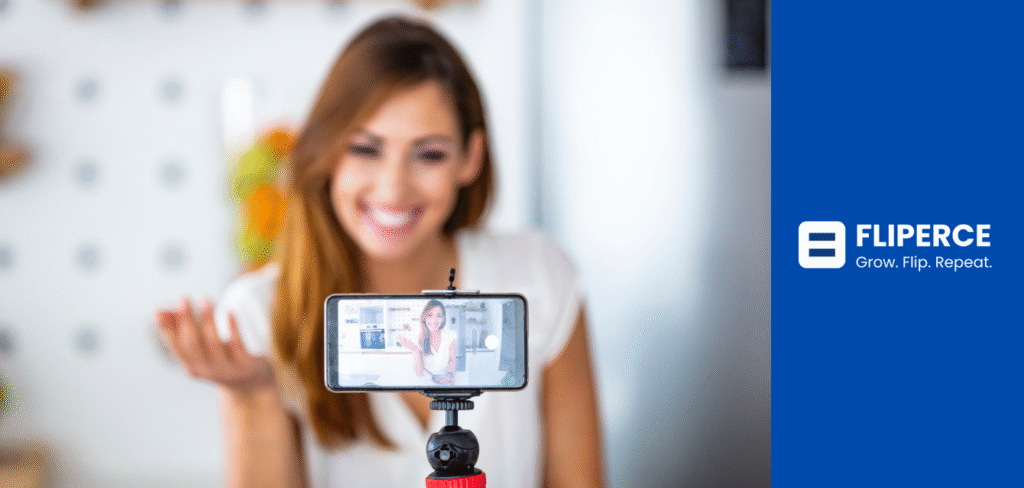
8. Choose the Right Marketplace and Market to Buyers
The right marketplace boosts sale prices by 15%. Shopify Exchange reported 10,000 sales in 2025, with 60% closing above asking price. Effective marketing attracts 30% more buyers, as seen in a tech store’s $700,000 sale. Brokers increase prices by 15%, while DIY suits smaller stores.
8.1 Marketplace Options
Shopify Exchange (0-5% commission) offers seamless transfers, while premium brokers (8-15%) vet buyers. A store on Shopify Exchange sold for $400,000 due to its integration. Choose based on store size—brokers for stores over $100,000, DIY for smaller sales.
8.2 Marketing Strategies
Craft a pitch highlighting ROI and unique features, like proprietary products. Video tours increase engagement by 25%, as seen in a $500,000 sale. Use tools like Loom for professional pitches, showcasing store operations.
8.3 Buyer Outreach
Promote on e-commerce forums like Reddit, targeting niche communities. A store’s forum campaign attracted 20% more offers. Run targeted ads on Google, budgeting $1,000/month, to reach high-net-worth buyers, boosting interest by 15%.
8.4 Broker vs. DIY
Brokers save 25% of time and increase prices by 15%. A brokered store sold for $700,000, 20% above DIY. DIY sellers should use Shopify Exchange for simplicity, ensuring clear listings to avoid lowball offers.
8.5 Marketing Metrics
Track metrics like ad click-through rates (5%) and forum engagement (10% response rate). A store sharing marketing data sold for $450,000 due to transparency. Use analytics to validate outreach efforts, appealing to 70% of buyers.
Marketplace Comparison
| Platform | Fee Structure | Benefit |
| Shopify Exchange | 0-5% commission | Seamless integration |
| Premium Broker | 8-15% commission | Vetted buyers |
Marketing Tactics
- Create a pitch deck with financial highlights.
- Use video tours for engagement.
- Target buyers via ads and forums.
9. Leverage AI and 2025 Trends for Competitive Edge
AI and trends like sustainability drive 25% market growth in 2025. AI tools boost conversions by 20% by analyzing customer behavior with 85% accuracy. A store used AI to optimize products, increasing its sale price by 15%. Sustainable stores attract 40% more buyers, with eco-friendly niches projected to grow 25% by 2026.
9.1 AI for Insights
Use AI tools for product recommendations, predicting trends with 85% accuracy. A store optimizing recommendations sold for $550,000. Analyze cart abandonment (reduced by 20%) and customer lifetime value ($500/customer) to highlight efficiency.
9.2 Sustainability Focus
Emphasize eco-friendly practices, like sustainable packaging. A store with eco-conscious branding sold for $550,000, appealing to 40% of buyers. Highlight metrics like reduced carbon footprints to align with 2025 trends.
9.3 Trend Alignment
Share trend-aligned metrics, like AI-driven conversions or sustainable product sales. A store showcasing 20% conversion gains sold for 15% above average. Use industry reports to identify trends, like personalization, valued by 60% of buyers.
9.4 Technology Integration
Incorporate AI apps for Shopify, boosting efficiency by 20%. A store with AI personalization sold for $500,000 due to its tech appeal. Highlight tech integrations in your pitch to attract forward-thinking buyers.
9.5 Trend Metrics
Track metrics like AI-driven sales (10% of revenue) or sustainable product margins (30%). A store sharing trend data sold for $600,000, 10% above average. Use analytics to validate trend alignment, boosting buyer confidence.
Trend Integration
- Adopt AI for personalization and analytics.
- Emphasize sustainable practices.
- Highlight trend-relevant metrics.
Expert Quote:
“Trends like AI and sustainability reshape e-commerce—align to win,” says a market strategist.
10. Negotiate, Close, and Support the Transition
Skilled negotiation boosts prices by 10-15%, as seen in a store securing $250,000 above asking with multiple offers. A smooth transition, valued by 80% of buyers, increases close rates by 15%. A store offering 30-day support sold for $600,000, showcasing the importance of preparation.
10.1 Negotiation Tactics
Highlight unique features, like proprietary products or niche exclusivity. Use scripts to counter low offers (e.g., “The store’s 30% growth justifies the price”). Escrow services, preferred by 90% of buyers, ensure secure transactions, as seen in a $500,000 sale.
10.2 Flexible Terms
Offer earn-outs or installments, boosting close rates by 20%. A store with an earn-out sold for $450,000, 12% above average. Structure terms clearly, using brokers to avoid disputes, appealing to 70% of buyers.
10.3 Transition Support
Document SOPs, supplier contacts, and training in a handover guide. A store with video tutorials sold for $600,000, saving 20 hours of onboarding. Offer 30-day support to address buyer concerns, increasing close rates by 15%.
10.4 Success Stories
A wellness store sold for $1 million by showcasing 30% growth and a 10,000-subscriber email list. A tech store fetched $800,000 with automated operations. Lessons include transparency (avoiding 15% of failures) and niche focus (20% higher prices).
10.5 Closing Metrics
Track metrics like offer-to-close ratio (80%) and support duration (30 days). A store sharing closing data sold for 10% above average. Use analytics to validate negotiation success, reassuring buyers of a smooth process.
Negotiation and Transition Plan
- Emphasize unique value propositions.
- Use escrow for secure payments.
- Offer 30-day post-sale support.
Expert Quote:
“Negotiation and support seal the deal—show value and ensure a smooth handoff,” says a veteran negotiator.
FAQ
Q: How long does it take to sell a Shopify store?
A: Typically 30-90 days, depending on preparation and platform.
Q: What’s the best platform for selling?
A: Shopify Exchange for seamless transfers, broader marketplaces for reach.
Q: How do I boost my store’s value?
A: Optimize financials, traffic, and branding for 15-20% higher prices.
Q: Are brokers worth it?
A: Yes, they increase prices by 15% and save 25% time.
Q: What documents are needed?
A: Financials, SOPs, and legal agreements, critical for 80% of buyers.
20 Tips for Selling Your Shopify Store
- Audit financials for transparency.
- Target high-intent keywords for traffic.
- Use mobile-first themes.
- Automate with dropshipping apps.
- Build a strong email list.
- Highlight recurring revenue.
- Resolve legal issues early.
- List on multiple platforms.
- Create video pitches.
- Use escrow for secure deals.
- Document SOPs.
- Run targeted buyer ads.
- Showcase growth potential.
- Optimize site speed.
- Add customer reviews.
- Use AI for analytics.
- Offer buyer financing.
- Engage on social media.
- Hire a broker for premium sales.
- Provide post-sale support.

